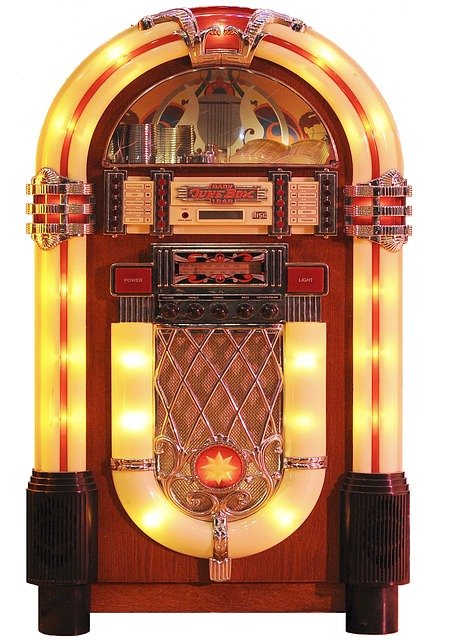By Tim Lambert
Britain has changed greatly since 1948. Today people are much richer. They live in far more comfortable homes and ordinary people can afford things that were luxuries in 1948 (like foreign holidays). People are also healthier and they live longer. They also have things like the internet that were not even dreamed of in 1948.
British Society Since 1948
British society has changed a great deal since 1948. In the 1950s large numbers of West Indians arrived in Britain. Also from the 1950s, many Asians came. In the late 20th century Britain became a multicultural society. There was another change in British society. In the late 20th century divorce and single-parent families became much more common.
In 1970 the law was changed so women had to be paid the same wages as men for doing work of equal value. From 1975 it was made illegal to sack women for becoming pregnant. Also in 1975, a new law made it illegal to discriminate against women in employment, education, and training. In the late 20th century the number of women in managerial and other highly-paid jobs greatly increased.
Also, in the 1950s young people had significant disposable income for the first time. A distinct ‘youth culture’ emerged, first with teddy boys, then in the 1960s with mods and rockers, and the late 1970s with punks and also with rock music. A revolution in music was led by Elvis Presley and Bill Haley.

Work and Industry Since 1948
For a long time after 1948, unemployment remained very low and the late 1940s the 1950s, and 1960s were a long period of prosperity. However, this ended in the mid-1970s. In 1973 there was still full employment in Britain (it stood at 3%). But, shortly afterward a period of high inflation and high unemployment began. In the late 1970s unemployment stood at around 5.5%.
However in the years 1980-1982, Britain was gripped by recession, and unemployment grew much worse. It reached a peak in 1986 then it fell to 1990. Unfortunately, another recession began in 1990 and unemployment rose again. However, unemployment began to fall again in 1993 and it continued to fall till the end of the century.
Meanwhile, in the late 20th century, a change was coming in the British economy, sometimes called de-industrialization. Traditional industries such as coal mining, textiles, and shipbuilding declined rapidly. On the other hand service industries such as tourism, education, retail, and finance grew rapidly and this sector became the main source of employment.
Since 1948 hardship in Britain has been greatly reduced. By 1950 absolute poverty had almost disappeared from Britain. Absolute poverty can be defined as not having enough money to eat an adequate diet or afford enough clothes.
However, there is also such a thing as relative poverty when you cannot afford the things most people have. Relative poverty in the late 20th century and increased in the 1980s. That was partly due to mass unemployment and partly due to a huge rise in the number of single-parent families, who often lived on benefits. During the 1980s the gap between rich and poor increased as the well-off benefited from tax cuts.
Homes Since 1948
British homes have become much more comfortable since 1948. By 1959 about two-thirds of British homes had a vacuum cleaner. However, fridges and washing machines did not become common until the 1960s. Central heating became common in the 1960s and 1970s. Double glazing became common in the 1980s. Plastic or PVC was first used in the 1940s. By the 1960s all kinds of household goods from drain pipes to combs were made of plastic.
In the early 1960s, many homes still did not have bathrooms and only had outside lavatories. In the 1960s, large-scale slum clearance took place when whole swathes of old terraced houses were demolished. High-rise flats replaced some of them.
However, flats proved to be unpopular with many people. Some people who lived in the new flats felt isolated. The old terraced houses may have been grim but at least they often had a strong sense of community, which was usually not true of the flats that replaced them. Furthermore, in 1968 a gas explosion wrecked a block of flats at Ronan Point in London and public opinion turned against them. In the 1970s the emphasis turned to renovating old houses rather than replacing them. Then, in 1979 the government adopted a policy of selling council houses.
Food Since 1948
Since 1948 food in Britain has become more varied and easier to prepare. However, rationing lasted for several years after the Second World War. Tea rationing lasted until 1952. Sweet rationing ended in 1953. Meat and cheese remained until 1954.
In the late 20th century convenience foods became far more common. That was partly because fridges, freezers, and later microwave ovens became common. (Microwave ovens first became common in the 1980s). The British diet also became more varied. Chinese and Indian takeaways and restaurants became common. So, in the 1980s, did hamburger and pizza chains. Fish fingers went on sale in 1955.

Meanwhile, in 1954 Marc Gregoire developed the non-stick frying pan. Fruit-flavored yogurt went on sale in Britain in 1963. Many new kinds of confectionery were introduced in the late 20th century. They included Polo Mints (1948), Bounty (1951), Yorkie and Lion Bar (1976), and Twix (1979). Also in the 20th century, new biscuits were introduced including bourbon (1910) and HobNobs (1986).
The way people shop has also changed since 1948. In the early 20th century people usually went to small local shops such as bakers or butchers. Shops usually did deliveries. If you went to the butcher you paid for meat and a butcher’s boy on a bicycle delivered it.
The first supermarket in Britain opened in 1948. In the 1950s and 1960s supermarkets replaced many small shops. Credit cards became available in 1966 and the early 21st century shopping on the internet became popular.
With decimalization in 1971, a pound became worth 100 pence (previously it was worth 240 pence and there were 20 shillings in a pound). Old coins like the sixpence and the threepence disappeared. New coins like the 50 pence and the 10 pence appeared.
Clothes Since 1948
Clothes in Britain have greatly improved since 1948. During the 1950s women’s clothes were full and feminine. However in 1965, Mary Quant invented the mini skirt and clothes became even more informal.
In the second half of the 20th century, fashions for both sexes became so varied and changed so rapidly it would take too long to list them all. One of the biggest changes was the availability of artificial fibers. Nylon was first made in 1935 by Wallace Carothers and polyester was invented in 1941. It became common in the 1950s. Vinyl (a substitute for leather) was invented in 1924. Trainers were designed in 1949 by Adolf Dassler. Women have worn stockings for centuries but tights were invented in 1959 by Allen Gant.
Transport Since 1948
Cars became far more common in Britain after 1948. They increased in number after World War II. By 1959 32% of households owned a car. Yet cars only became common in the 1960s. By the 1970s the majority of families owned one. In the mid-20th century, there was a large network of branch railways. However, in 1963, a minister called Dr. Beeching closed many of them. The hovercraft was invented in 1955. The first hovercraft passenger service began in 1962.
In the early 20th century only a small minority of people had a telephone. They did not become common till the 1960s. Even so, in 1979 31% of households did not have a phone. Mobile phones became common in the 1990s. Emails also became common at that time.
In 1919 planes began carrying passengers between London and Paris. Jet passenger aircraft were introduced in 1949. However, in the early 20th century flight was a luxury few people could afford. Furthermore, only a small minority could afford foreign travel. Foreign holidays only became common in the 1960s. The Boeing 747, the first ‘Jumbo jet’ was introduced in 1970. The Channel Tunnel opened in 1994.
Leisure Since 1948
Many new games and forms of entertainment have been invented in Britain since 1948 and people now have more leisure time. Television first became common in the 1950s. A lot of people bought a TV set to watch the coronation of Elizabeth II and a survey at the end of that year showed that about one-quarter of households had one. By 1959 about two-thirds of homes had a TV. By 1964 the figure had reached 90% and TV had become the main form of entertainment – at the expense of cinema, which declined in popularity.

At first, there was only one TV channel but between 1955 and 1957 the ITV companies began broadcasting. BBC2 began in 1964 and Channel 4 began in 1982. Channel 5 began in 1997.
In Britain BBC2 began broadcasting in color in 1967, BBC 1 and ITV followed in 1969. Video recorders became common in the early 1980s. Many video hire shops opened at that time. At the end of the century, videos were replaced by DVDs. Portable TVs became common in the 1980s and satellite broadcasting began in 1982. Satellite or cable TV became common in the 1990s. Personal computers became common in the 1980s. The internet became common in the 1990s.
Furthermore, in the late 20th century gardening became a very popular pastime. So did DIY.
In the late 20th century plastic and metal toys became much cheaper and much more common. In the 1950s Lego became a popular toy. Mr Potato Head was invented in 1952. The skateboard was invented in 1958. Barbie dolls were invented in 1959 and Action Man went on sale in Britain in 1966. In the early 1970s space hoppers and clackers were popular toys. At the end of the 20th century computer games became very popular.
Among modern toys, the Tamagotchi was invented in 1996 and the Furby went on sale in 1998.
Education Since 1948
Education has greatly improved in Britain since 1948. In 1948 the school leaving age was raised to 15 and in 1973 it was raised to 16. Following the 1944 Education Act, all children had to sit an exam called the 11 plus. Those who passed went to grammar schools while those who failed went to secondary modern schools. However, in the late 1950s, public opinion began to turn against the system, and in the 1960s and early 1970s, most schools became comprehensive.
Corporal punishment was phased out in most primary schools in the 1970s. The cane was abolished in state secondary schools in 1987. It was finally abolished in private schools in 1999.
There was a huge expansion of higher education in the 1960s and many new universities were founded. In 1992 polytechnics were changed to universities. Meanwhile, the Open University began in 1969. In the late 20th century people had far more opportunities for education and training than ever before.
Medicine Since 1948
A vaccine for measles was discovered in 1963. In Britain, the health of ordinary people greatly improved when the National Health Service was founded in 1948. In the 1950s Dr Jonas Salk invented a vaccine for poliomyelitis. A vaccine for measles was discovered in 1963.
Meanwhile, surgery made great advances. The most difficult surgery was on the brain and the heart. Both of these developed rapidly in the 20th century. The first heart transplant was performed in 1967. The first test-tube baby was born in 1978.